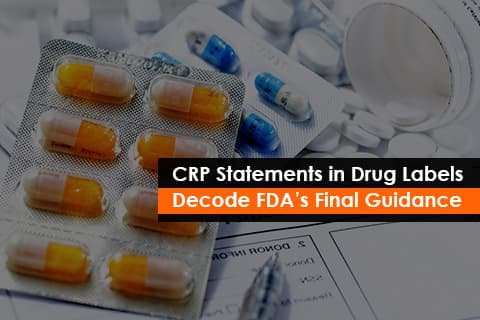Are you a manufacturer of Prescription and Over the Counter (OTC) drugs? Then it is obvious that you are aware of the US Consumer Product Safety Commission (CPSC) regulations under which certain consumer products, including many prescription and OTC drugs are subject to special packaging standards, including Child-Resistant Packaging (CRP) Statements in drug labels. Referring to the same, the FDA has now released a final guidance on the CRP statements which should be used in the drug labels.
The guidance is intended to assist applicants, manufacturers, packagers, and distributors to ensure that CRP statements on labeling are not false or misleading, and such statements should comply with CPSC Regulatory standards. In the guidance, the FDA also recommends text that is appropriate to consider when including CRP statements for prescription drug products and non-prescription drug products.
Why a CRP Statement Required on a Label?
As per the guidance, it is clear that visual inspection might be difficult for healthcare professionals and consumers to identify whether the packaging is child-resistant or not. Thus, the attribute of CRP statement in labeling is made mandatory. However, the guidance also states that the statement should clearly be labeled in words rather than abbreviations like CRP, CRC, or CR, and symbols.
CRP Recommendations
The guidance provided additional recommendations for both prescription and non-prescription drug products. They include:
- For Prescription Drug Products
- Prescribing information
- Patient information
- Carton Labeling
- For Non-prescription Drug Products
- Drug Facts Labeling
- Carton Labeling and Container Labels
Criterion and Process for CRP Statement Inclusion
If a manufacturer decides to include a CRP statement on the Prescription and OTC drug labeling, they should first inform the FDA in writing that the CRP statement follows CPSC’s 16 CFR 1700. The process of inclusion might differ from prescription to non-prescription products. Manufacturers have no specific process of informing the FDA through written verification for non-prescription products. But for prescription products approved under NDA, BLA and ANDA submissions and post-approval changes, they should look into a written verification that CRP meets the CPSC’s standards.
This summary of the FDA’s finalized guidance might give you information on how to proceed with CRP statements, but it is just on high level. As you deep dive through the guidance, the complexities might arise, and an expert consultation may sound better. Stay informed to be compliant.





